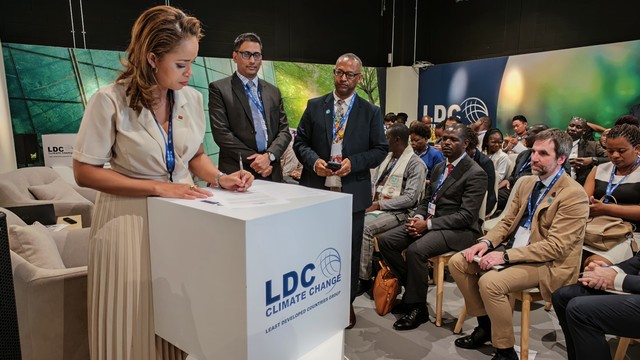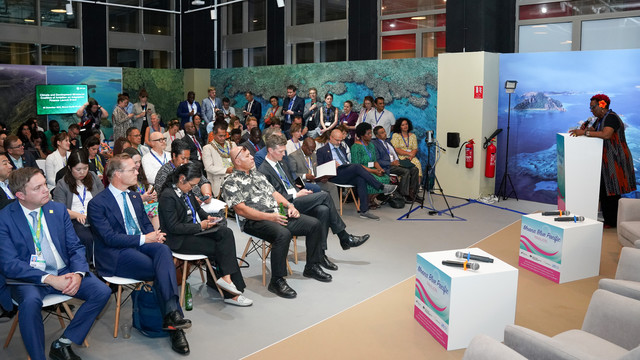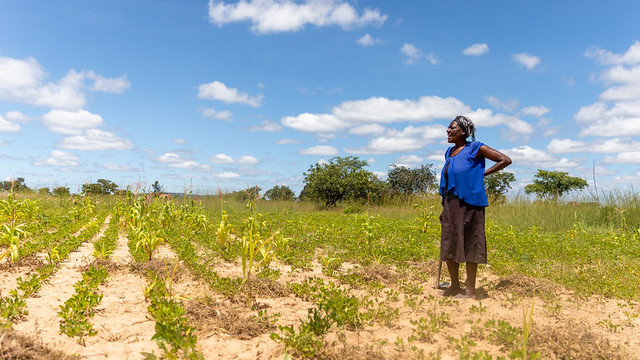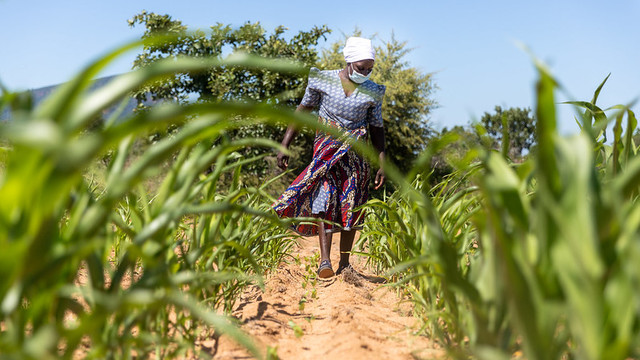‘Historical’ COP28 outcomes nowhere near enough for least developed countries
The least developed countries (LDC) climate negotiating group highlights the lack of strong COP28 outcomes on climate equity and finance for adaptation, with major challenges ahead for COP29, particularly as LDCs face significant post-pandemic debt



Dr Sultan Al Jaber, COP28 president, right, and UNFCCC executive secretary Simon Stiell at the end of the closing plenary at COP28 in Dubai (Photo: UNclimatechange/COP28/Christopher Pike, via Flickr, CC BY-NC-SA 2.0 DEED)
The COP28 climate summit started on a high note with the adoption of recommendations on how the new loss and damage fund should operate. This was a major win for the least developed countries (LDCs), represented by the LDC Group. Despite this promising start they faced long and tough negotiations to deliver enough ambition on climate finance, the Global Stocktake, the Global Goal on Adaptation and a myriad of other agenda items.
As the final gavel came down on COP28, there was both cause for celebration – the final package was stronger and more ambitious than early texts indicated it might be – and concern, as the outcomes reflected the lowest possible ambition that the LDC Group could accept.
Discrepancy remains in loss and damage pledges
LDCs welcomed early pledges to the loss and damage fund totalling US$792 million (or less), including $100 million by the United Arab Emirates (UAE) and just $17.5 million by the US. But this is far from matching the scale of funding needed to address the irreversible losses and damages in low-income countries, estimated at $116-435 billion per year in 2020, and growing.
Whether the fund is fit for purpose largely depends on how the newly established board operates. It will require a finance model that delivers adequate, grant-based funding quickly when needed. That way it can support the recovery, reconstruction and rehabilitation of communities following extreme climate events, as well as address ongoing loss and damage from the slow-onset effects of climate change.
Climate finance falls short
After the summit’s encouraging start, outcomes on climate finance were ultimately disappointing: funding remains woefully below the level necessary to match needs, particularly for adaptation. For LDCs the negotiations failed to advance key issues, including agreement on a common definition of climate finance – critical to tracking progress towards the delivery of global climate finance goals.
Discussions on the new collective quantified goal (NCQG) on climate finance, which is due to be decided at COP29 in 2024, agreed a process which will continue the ad hoc work programme and include a series of technical expert dialogues. However, a huge effort will be needed to reach agreement on the scope and scale of the goal.
For LDCs, it is critical that this goal reflects their needs and is based on the best available science.
For many, the elephant in the room in discussions across all aspects of climate action and finance was the rapidly spiralling debt burdens faced by many developing countries post-COVID-19. The reality for many LDCs is that financing climate action by accessing even highly concessional loans will rapidly tip them into debt stress.
Global Stocktake reveals action gap
The Global Stocktake (GST) negotiations were always going to be painful – the process that concluded at COP28 was the first stocktake under the Paris Agreement, and therefore parties had to create it as they went, and assess progress against Paris Agreement objectives.
This intense two-year process galvanised technical experts and stakeholders from across the climate landscape to assess whether Parties were on track to meet the global goals of the Paris Agreement on mitigation, adaptation, loss and damage, and means of implementation.
Anna Schulz and Yamikani IdrissThe principle of special needs and circumstances is a non-negotiable element of equity and climate justice
COP28 provided the perfect global platform to highlight the stocktake’s conclusions that despite progress made, there remain significant gaps in implementing the Paris goals. It was therefore critical that Dubai culminated in a clear and concrete path towards closing the gaps where Parties have fallen short.
Would the GST reach an agreement that was sufficiently ambitious? In the final hours of negotiations this critical question was in the balance. In the end, while some text was significantly stronger than the widely criticised first draft, the agreement contained weak language on finance for loss and damage in comparison to mitigation and adaptation. In response, the LDC Group, in its closing statements, set out their expectations that loss and damage will be addressed adequately in the upcoming NCQG negotiations.
Step forward on Global Goal on Adaptation
Resolving the Global Goal on Adaptation (GGA) proved almost impossible. A week of technical negotiations failed to produce a draft text that could be discussed at the political level. The LDC Group pushed for a strong overarching target, a set of targets focused on the adaptation governance cycles and thematic targets that capture the need for adaptation across all sectors of society. These targets, backed by means of implementation support from developed countries, are vital to adaptation on the ground in LDCs.
The adoption of the GGA framework including these targets was therefore a welcome step forward. Although the targets were not linked to means of implementation, and the text failed to call on Parties to significantly scale up adaptation finance, it did recognise the growing gap in adaptation finance.
Some promise, but bumps in the road ahead
For the first time in the COP process, the final outcomes of the GGA and GST negotiations begin to respond to the debt crisis − bringing in language recognising limited fiscal space and macroeconomic circumstances. In addition, the GST recognised the consequences of loss and damage on fiscal space and ultimately its negative consequences on delivering the Sustainable Development Goals.
On the other hand, COP28 marked a concerning trend of Parties trying to remove language referencing the special needs and circumstances of LDCs and Small Island Developing States (SIDS). This is a fundamental element of the UNFCCC and the Paris Agreement, and its questioning is deeply worrying in the light of an ever-increasing need for global solidarity with those least responsible for and most affected by the consequences of climate change.
The principle of special needs and circumstances is a non-negotiable element of equity and climate justice, and it was disappointing to see some in the process trying to use it as a bargaining chip to undermine ambitious outcomes.
Given the outcomes of COP28, negotiators navigating the road from Dubai to Baku, Azerbaijan, are likely to face a bumpy ride.
The central task for COP29 will be agreeing to a new collective quantified goal on climate finance. In the meantime the battles over climate finance will heat up in light of the failure to recognise the scale of need, equity and climate justice for LDCs.



